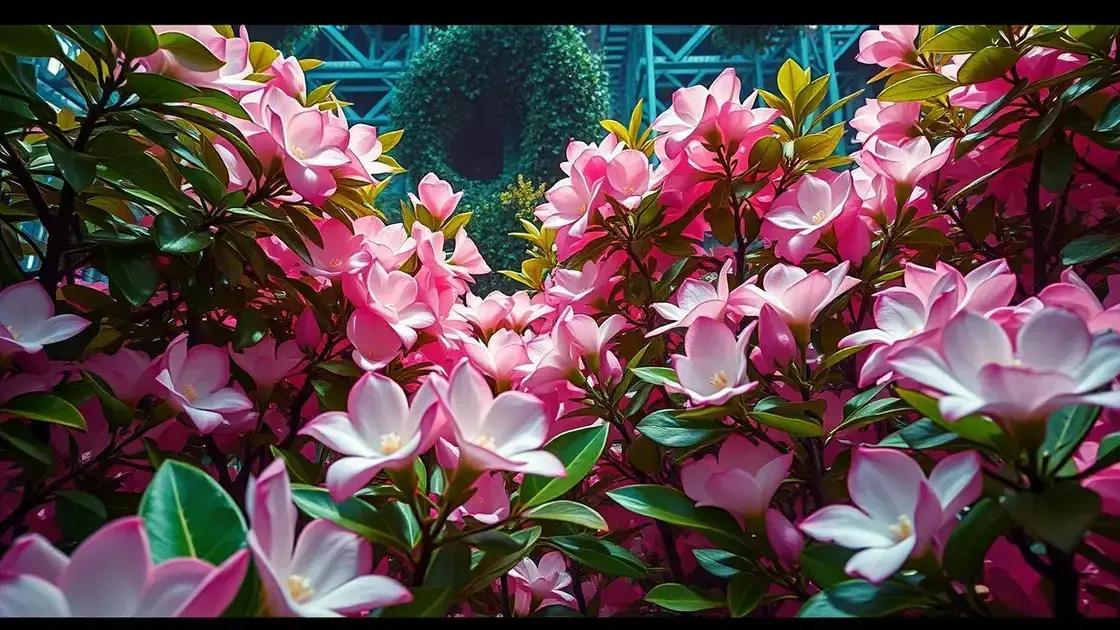How to take care gardenia plant can seem challenging, but with the right approach, you’ll be nurturing these fragrant beauties in no time. Gardenias are adored for their stunning white blooms and sweet fragrance, making them a favorite amongst gardeners. Dive into our tips and tricks to see your gardenia thrive in your home or garden.
Table of Contents
ToggleEssential watering schedule for gardenia plants
How to take care gardenia plant includes understanding the essential watering schedule crucial for their growth. Gardenias thrive when properly hydrated, requiring careful attention to their watering needs to flourish and produce their beautiful blooms.
Understanding the Gardenia’s Watering Needs
Gardenia plants prefer consistently moist soil but should not become waterlogged. Recognizing their specific needs will help you maintain a healthy watering schedule.
Ideal Water Frequency
- Water gardenias thoroughly once the top inch of the soil feels dry.
- In warmer months, you may need to water every 2-3 days.
- During the colder months, reduce the frequency to once a week.
Signs of Overwatering or Underwatering
It’s essential to recognize the signs of overwatering and underwatering:
- Overwatering: Yellowing leaves, wilting, or root rot.
- Underwatering: Droopy leaves, dry soil, and brown leaf edges.
Best Practices for Watering
- Use room temperature water to avoid shocking the plant.
- Ensure proper drainage to prevent soggy roots.
- Consider using distilled or rainwater as gardenias are sensitive to chemicals in tap water.
Seasonal Adjustments
Adjusting your watering schedule with the changing seasons is vital:
- More frequent watering in spring and summer when the plant is actively growing.
- Less frequency in fall and winter when growth slows.
By observing your gardenia’s response to watering and adjusting accordingly, you can create a thriving environment for these beautiful plants. For more tips on maintaining indoor plants, consider exploring indoor gardening techniques that can enhance your overall gardening experience.
Best soil requirements to nurture gardenias

Best soil requirements to nurture gardenias are vital for their overall health and ability to bloom beautifully. Creating an optimal soil blend can significantly impact your gardenia’s growth, making it essential to choose the right mix that provides the right balance of air, moisture, and nutrients.
Characteristics of Ideal Gardenia Soil
For gardenias to thrive, consider soil that meets the following characteristics:
- Well-draining to avoid waterlogged roots.
- A slightly acidic pH, ideally between 5.0 and 6.0.
- Rich in organic matter to supply essential nutrients.
Recommended Soil Mixes for Gardenias
Combining specific components can help you create the best soil for your gardenias:
- Mix equal parts of peat moss, pine bark, and perlite or sand.
- Add an organic fertilizer to enrich the nutrient content.
- Consider incorporating composted materials for added organic matter.
How to Check Soil pH Levels
It’s crucial to ensure that your gardenia soil has the right pH. Here’s how to check it:
- Use a soil pH meter or DIY kits available at gardening stores.
- Test the soil at different depths to get an accurate reading.
Common Soil Issues and Solutions
Identifying and addressing common soil issues can enhance your gardenia’s health:
- Poor drainage: If water pools around the roots, consider amending the soil with more perlite or replacing it with a better-draining mix.
- Alkaline soil: If your soil is too alkaline, add elemental sulfur to lower the pH.
By focusing on the best soil requirements to nurture gardenias, you can create an environment where these beautiful plants can flourish. For more insights on maintaining a healthy indoor environment, check out exploring indoor gardening techniques that may help in your overall gardening efforts.
Light and fertilizer needs for gardenia health
Light and fertilizer needs for gardenia health are essential elements to ensure the vitality and blooming of your gardenia plants. Understanding how to properly provide these resources will lead to lush, fragrant flowers and robust foliage.
Optimal Light Conditions for Gardenias
Gardenias thrive in bright, indirect light. Here’s how to optimize their light exposure:
- Location: Place them near a window with filtered sunlight, avoiding direct harsh sunlight that can scorch the leaves.
- Light duration: Aim for about 4-6 hours of light per day for healthy growth.
- Seasonal adjustments: In the winter, you may need to move them closer to a window to maximize available light.
Fertilizer Strategies for Thriving Gardenias
Feeding your gardenias correctly is crucial to their health. Here’s how to approach fertilization:
- Choose a balanced fertilizer specially formulated for acid-loving plants, such as a 30-10-10 formula.
- Apply fertilizer every 4-6 weeks during the growing season, which is typically spring through summer.
- Reduce or stop fertilization in fall and winter when growth slows.
Signs of Nutrient Deficiency
Recognizing nutrient deficiencies is important for timely interventions:
- Yellowing leaves: Often indicates nitrogen deficiency or iron chlorosis.
- Poor blooming: Can signify insufficient phosphorus.
Best Practices for Maintenance
By following these best practices, you can ensure your gardenias receive the right light and nutrition:
- Monitor light levels regularly and adjust plant placement as needed.
- Always water before and after fertilization to prevent root burn.
Providing optimal light and fertilizer is key to maintaining healthy gardenia plants. For further insights into improving your indoor gardening skills, consider exploring indoor gardening techniques that can enhance your gardening journey.
In conclusion
Caring for gardenia plants requires attention to several key factors, including proper watering, soil requirements, light exposure, and fertilizer application. By following the best practices we’ve discussed, such as maintaining a suitable watering schedule, using the right soil mix, providing adequate light, and applying appropriate fertilizers, you can ensure the health and vibrancy of your gardenias. As you nurture these beautiful plants, explore additional resources and tips on enhancing your indoor garden to further enrich your gardening journey.

